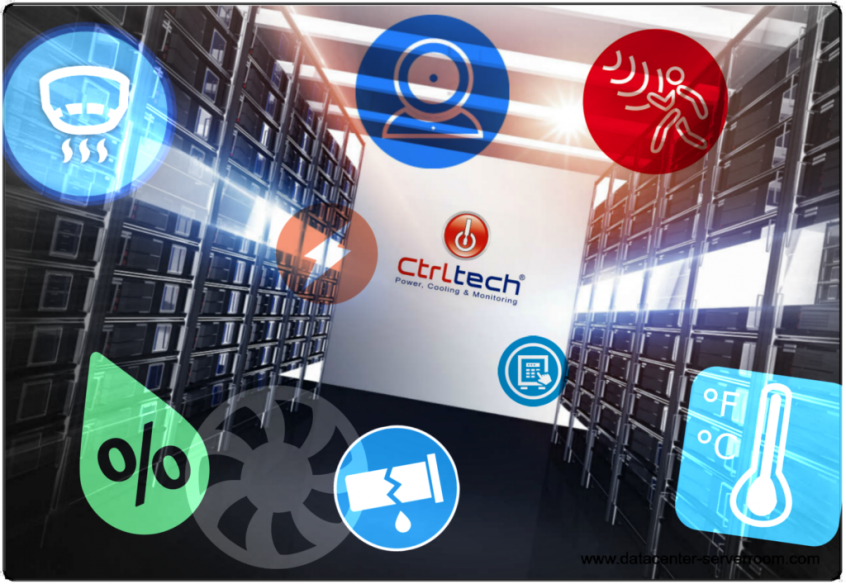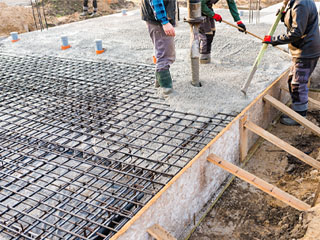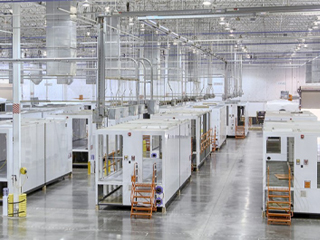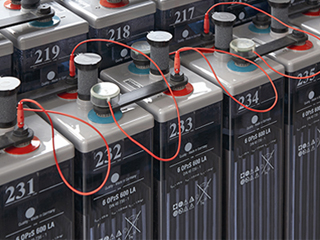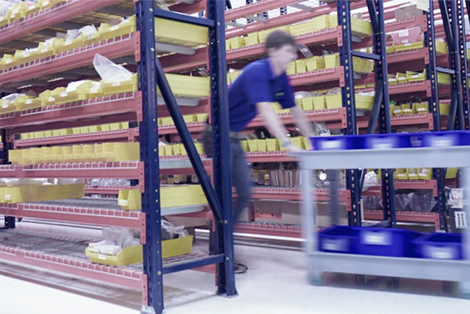Heat is the number one enemy of data centers. If the temperature goes above tolerable levels, equipment is at risk of failure. Worse, it hurts the bottom line. As the ambient temperature goes up, so too does the energy needed to cool it down, translating to higher energy costs. Cooling technologies are great at preventing the prevalence of high temperatures. But to level up its effectiveness, cooling devices are paired with sensors or server room temperature monitoring devices (TMD). These are network-enabled sensors that measure whether or not the server rooms are operating at an optimal temperature.
Like cooling systems, temperature monitoring technologies can be placed anywhere in the data center. In fact, it’s even more important to scatter them through the room due to the dynamics of temperature flow.
What Is Temperature Monitoring In Data Centers?
Temperature monitoring can help management achieve their goal of minimizing heat while reducing their cooling costs. Cooling the servers take up lots of energy. The data center company can crank down the temperature as low as possible to prevent heat exposure. But that also means higher expenses. If the company has a proper temperature monitoring system, it’s easier to know the optimal temperature. This allows the equipment to remain cooled at a slightly higher degree.
There are international agencies that provide guidelines as to the temperature that should be maintained. The U.S. General Services Administration recommends between 22°C (72°F) and 26°C (80°F). For Energy350, it’s 32°C (89.6°F). Both claimed these temperatures can achieve maximum efficiency saving up to four or five percent in energy costs.
These temperature ranges are constantly evolving. Not all data centers are the same, with differences in size, equipment, resources, people, etc. This is where TMD comes in useful. The data they provide is tailored to the specific setup of the data center in question.
Different Types Of Temperature Monitoring
Temperature monitoring devices come in all shapes, sizes, and functions. There’s a lot in the market. But to sort them out and help you guide in your purchase, it’s important to understand the different types of temperature monitoring.
Rack Level Monitoring
Racks are expensive. According to Gartner’s study, the annual cost of an equipped Wintel rack is around $70,000 USD per year excluding the business and purchasing costs. So preventing damage to installed equipment is a top priority.
The absence of temperature monitoring sensors near the racks allows the recirculation of heat to go unnoticed, exposing the racks to damaging high temperatures. Rack-level temperature monitoring enables accurate measurement of the movement of heat surrounding the racks. Doing so helps provide information for necessary adjustments.
The American Society of Heating, Refrigerating and Air-Conditioning Engineers (ASHRAE) suggests having racks covered with more or less six sensors. This can help prevent the AC from overcompensating. This happens when the heat is too much to bear and sensors are placed at room level, the AC systems are forced to compensate. AKCP thermal map sensors fulfill this ASHRAE recommendation with 3x sensors at the front, top middle, and bottom ad 3x at the rear.
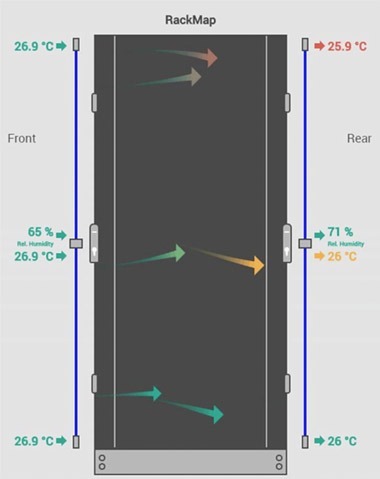
Ambient Room Monitoring
Ambient room monitoring is also called room-level monitoring. Sensors are placed near hot zones and near AC units measuring temperature and humidity levels. The recommended number of devices depends on the number of hot zones and AC units. When some AC don’t have nearby sensors, no alarms will be sent in case of a single AC breakdown. So it’s important to place sensors near as many AC as possible.
Humidity monitoring is as important as server room temperature monitoring The standard relative humidity levels should be between 40% to 60%. Anything beyond that range will lead to either the build-up of static electricity or the start of corrosion. Both will equally damage the units. So it’s important to include humid and temperature sensors in the purchase.
Benefits of Server Room Temperature Monitoring
Minimizes Downtime By Sending Alerts Before A Disaster Occurs
Downtime is possibly the single biggest nightmare of data center companies. It affects clients foremost, not only reducing their bottom line but also shrinking the possibility of winning them back due to a damaged reputation. So the probability of having downtime no matter how short is not an option.
Temperature sensors are the best preventive measures against downtime. When these devices are spread accordingly, they can measure temperatures in real-time, sending alerts at the slightest hint of excursions.
It’s important to understand the difference between good and bad temperature monitoring systems. Bad systems have devices in place but they can’t work without personnel intervention. Good systems can send alerts and act on predetermined configurations.
Prevents Recirculation Of Heat In Server Racks
Having good temperature sensors provide lots of upsides. When near server racks, the management has the ability to monitor the temperature and ensure that heat is not recirculating. When heat travels back to servers, it can damage the equipment or can prompt the fans to work harder leading to inefficiency. Blanking panels installed in empty rack space are also beneficial in preventing recirculating air.
Adjusting AC Temperature To Maximize Cooling Costs
As mentioned above, there’s a sweet spot in terms of cost-reducing temperatures. That can only be determined with the data provided by TMD. When the management actively monitors the temperature, they will notice some trends and baselines. Such information can help provide the management with the necessary adjustments. They can crank up as high as possible allowing them to save energy costs without compromising the equipment. And it’s a win-win situation.
But be sure to wait and see when applying changes in server room temperature. Optimal changes will take time to manifest. Doing so drastically can hurt the temperature balance.
Helps In Planning And Scaling Server Room Temperature Monitoring
TMDs can even help with the planning and scaling of server rooms. Obviously, energy costs have a correlation with size. The bigger the room, the more AC units there have to be, more exhaust fans, and cold aisles all while maintaining the level of temperature.
Temperature sensing devices can provide the cooling loads and airflow distribution of the current layout. This is done side by side with taking into account the electrical consumption of AC units to cool the server rooms.
This information can help the managers when planning for additional heat loads from new equipment. Lastly, effective monitoring systems keep this layout intact even after all the changes are incorporated.
Avoids Equipment Breakdown And Extends Lifespan
Equipment can be costly. They are the lifeblood of data centers. From computing equipment to racks to containments, they run 365 days 24/7. That is an immense use of energy and processing power that constantly takes a toll on the equipment’s life expectancy.
Cooling and monitoring systems help preserve the life of the equipment, even extend it in some cases. Temperature spikes or deviations from the acceptable cold range can wear out the equipment. With cooling units in place, the equipment can work optimally without having to fight the burden of heat. Monitoring sensors can help prevent temperature deviations so the possibility of the equipment getting exposed to unnecessary heat is highly unlikely.
Final Thoughts
The use of temperature monitoring is highly recommended in places where temperatures play a vital role. In data centers, where most of its equipment runs in cold rooms, the presence of heat is alarming. Monitoring technologies detect this potential danger even before it could bring harm. The effects of chronic temperature spikes are irreversible. It damages the equipment, the server rooms, and ultimately the data centers.
It’s important to incorporate the planning and purchasing of monitoring sensors at every corner of the business process. Acknowledging the benefits of temperature monitoring is one step. Looking for effective companies that can deliver good monitoring results is another. Aside from the effectiveness of the equipment, it pays to look at the company’s track record before purchasing.
AKCP is one of the leading companies in this industry. Their monitoring solutions have stood the test of time test since 1981. AKCP humidity and monitoring solutions have built-in alerts connected to software, enabling a seamless connection between the devices and IT staff members. When companies invest in data center monitoring solutions like the ones offered by AKCP, they can achieve maximum cost and energy efficiency.

